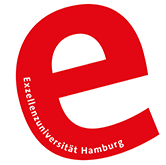What has been achieved so far?Taking stock of Understanding Written Artefacts
11 May 2023, by Jakob Hinze

Photo: UHH/C. Mahjoub
Since 2019, Universität Hamburg has been a designated University of Excellence. A year earlier, it received grants for 4 research clusters. What has been accomplished since then and how has funding been used? The Cluster of Excellence Understanding Written Artefacts is an internationally unique research collaboration that surmounts the divisions between the humanities, the natural sciences, and the computer sciences, thereby transforming research on written artefacts, from cuneiform to the digital era.
At Universität Hamburg, the study of written artefacts has grown continuously both in scope and significance. What began as a research group in 2006 and became a collaborative research center in 2011 ultimately grew into the Cluster of Excellence Understanding Written Artefacts (UWA) in 2019. This cluster brings together over 150 researchers from at least 40 different disciplines at Universität Hamburg, the Technical University of Hamburg-Harburg, the Helmut Schmidt Unviersity, the University of Lübeck, DESY, and the Bundesanstalt für Materialforschung und -prüfung (BAM).
Central to the UWA's research approach is the link between the humanities and the natural and computer sciences. Drawing upon expertise from food chemistry, particle physics, and AI, the cluster can develop entirely new lines of inquiry for historical and modern written artefacts. Thus, the UWA has created the first conceptual framework for studying written artefacts from all cultures and epochs, including manuscripts, inscriptions, and graffiti.
Solving ancient riddles using the latest methods
The pioneering Immersive City Scripts* epitomizes this interdisciplinary approach. Historians, archeologists, and computer scientists in the project have created a model of the ancient Milet theater using virtual reality. This makes it easier than ever before to understand the spatial context of historical inscriptions. Reading Closed Cuneiform Tablets Using High Resolution Computer Tomography is a project in which researchers use tomography they developed themselves to make Mesopotamian cuneiform tablets readable even though they have been sealed in ceramic containers. The UWA has thereby made a substantial contribution to the development of non-invasive methods of analysis for cultural goods.
The tomograph, like all of the devices in the mobile laboratory of the cluster of excellence, can be used the world over in museums and collections, for example, in a project at the Louvre. With their Pattern Analysis Software Tools (PAST) , the UWA also provides analytical tools that link the rapid development of AI and humanities research.
Sustainable concepts for research data and cultural preservation
The cluster's innovative work is reflected in over 300 publications to date, including articles and books in Arabic, Chinese, and Thai. Because the research on written artefacts is creating an increasingly large amount of data, the USW has been developing concepts for sustainable research data management, particularly in the humanities. All of the software tools and the majority of the publications are open access.
The cluster's researchers are making a valuable contribution to society at large because written artefacts are part and parcel of all of humankind's shared heritage. Their research also involves an obligation to preservation. The research area Cultural Heritage fosters preservation projects for endangered written objects in Indonesia, Israel, Mali, Nepal, and Tunesia. Since 2019, external funding in the amount of €2.5 million has been granted for these projects. Because the handling of historically and culturally significant artefacts requires of researchers a high degree of responsibility, the cluster's ethics group has also developed a detailed guide to provide orientation for tricky situations.
Support for doctoral and early career researchers from primary through graduate school
As one of the few clusters of excellence in Germany primarily anchored in the humanities, UWA and its unique approach have attracted top international researchers. Its fellowship program has recruited over 20 renowned researchers to Hamburg. In 2022 alone, 3 members were awarded prestigious ERC grants for their projects. Moreover, professorships in bioinformatics, Assyrian studies, and archeometry, as well as the guest professorship Women in Manuscript Cultures were established; the last one strengthens a gender-sensitive perspective of literary cultures.
New generations of researchers are also making vital contributions to the UWA's research portfolio: postdocs and junior professors head 8 of 11 research fields. The Graduate School trains master's students and doctoral researchers, teaching them how to consider the study of written artefacts from both humanities and natural science perspectives from the outset. Of the almost 100 enrolled students, 32 are international and many of these are from the Global South. The J.P. Gumbert Dissertation Award worth €5,000 and a fellowship has also been established to recognize young researchers who have completed their doctorates.
* All links lead to English-language sites.
Series taking stock of the clusters of excellence and Universität Hamburg—University of Excellence
In July 2019, Universität Hamburg was deemed a University of Excellence by the German Council of Science and the Federal and German Governments. It was one of only 11 universities and university collaborations in Germany to earn the distinction. Funding began in November 2019.
Universities had to have at least 2 clusters of excellence to apply for recognition as a “University of Excellence.” Universität Hamburg has gone beyond that, hosting 4 clusters since 2018. In this series, we present the achievements of the 4 clusters at Universität Hamburg—University of Excellence so far.
Read more of our reports on Taking Stock of the Excellence Strategy in the Cluster of Excellence Quantum Universe and the University of Excellence over the coming days.



